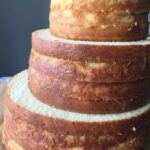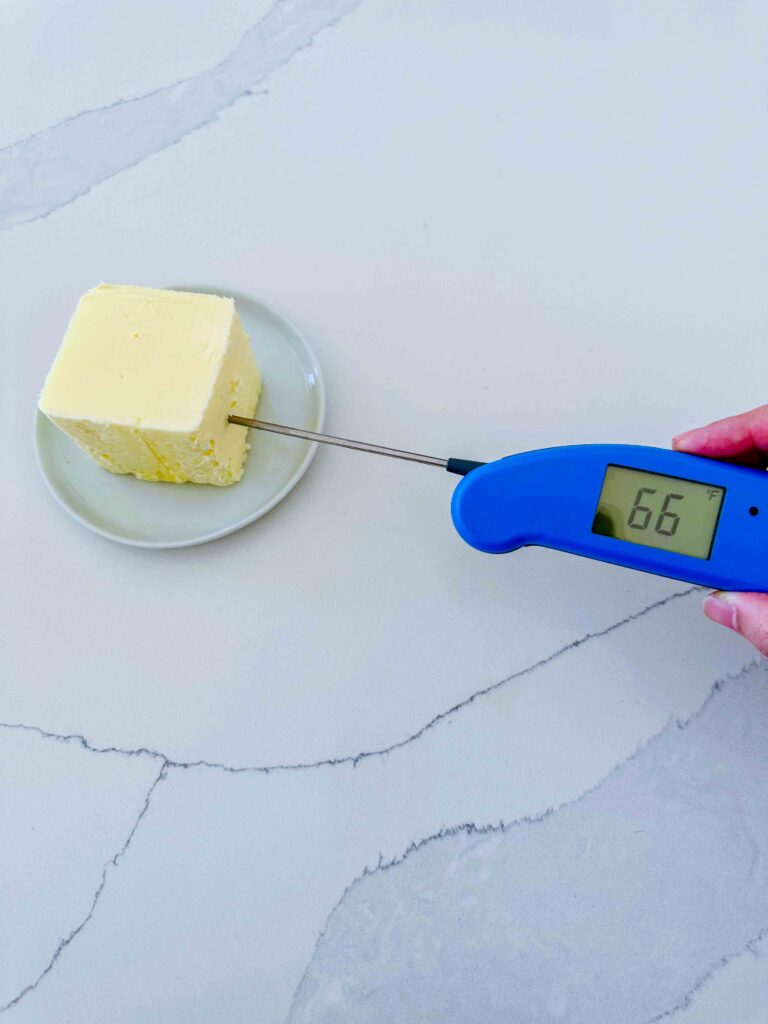If you’ve ever worked with butter, you know that it can be a bit of a fuss. It’s either too hard to spread or too soft and melty. But have you ever noticed that some recipes call for “room temperature” butter? What exactly is room temperature butter and why is it so important to baking?
- What is room temperature butter?
- The best way to know if your butter is at room temperature
- What if I don’t have a thermometer?
- Why the right butter temperature is important in baking
- Is softened butter same as room temperature butter?
- How to bring butter to room temperature?
- What about the microwave method?
- Put your new knowledge to good use. Try some of these recipes!
What is room temperature butter?
Room temperature butter is, quite simply, butter that has been allowed to come to room temperature. This means that the butter is soft enough to easily spread, but not so soft that it’s starting to melt.
In the world of baking, room temperature butter does not mean that it is warm. It must be cool to touch and should be around 65°F – 67°F (18°C – 19.5°C) – most likely colder than than the temperature in your kitchen.
Stella Parks even suggested to use butter that is at 60°F to take into account a couple of factors. Check out her informative post about creaming butters.
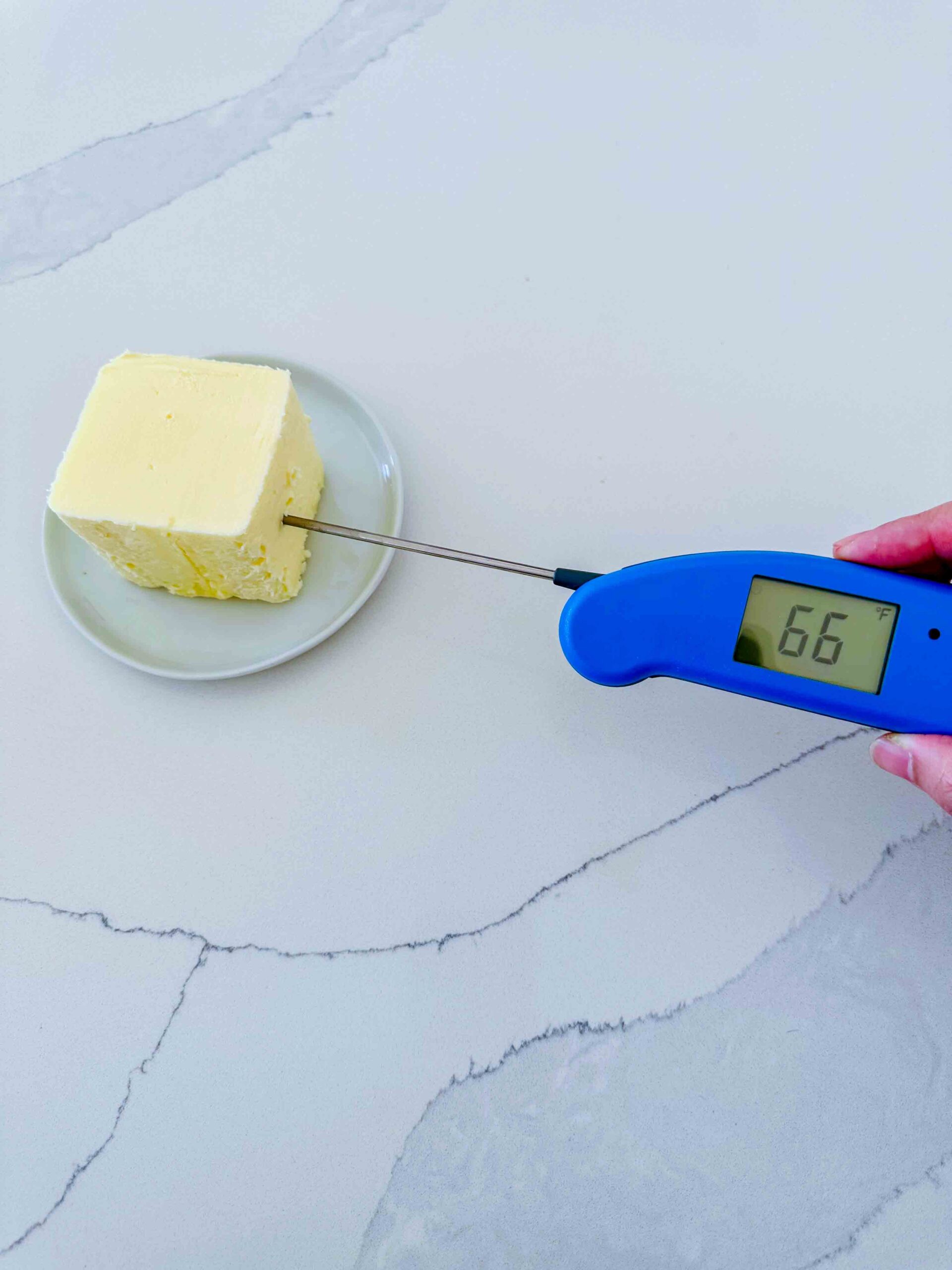
The best way to know if your butter is at room temperature
I understand that “what is soft enough” may be different for each person. When I was just starting to bake, I was always second-guessing if my butter was really at the right temperature.
That is why the best way to know if your butter is at room temperature is by using a thermometer. A thermometer will accurately tell you if your butter is too cold, too soft, or just right. No more guesswork!
By using a thermometer, I can surely say that if my baked good turned out not as I wanted it to be, the temperature of my butter was not the culprit since it was accurately checked.
There could be many reasons why your cakes, pies, or pastries didn’t turn out well, so taking out one of the factors that may sabotage it increases the chance of a successful bake.
An accurate thermometer is a useful tool in the kitchen whether you are baking or cooking. If you are thinking of buying one, I use and recommend this thermometer from Thermoworks. This is not sponsored – I simply find this product useful and reliable!
What if I don’t have a thermometer?
If you don’t have a thermometer, a good way to test is to press one finger into the top of the butter. Your finger should make a slight indent, but your finger should not easily push through the butter or go all the way through the bottom without applying too much pressure.
Butter that is shiny or greasy means your butter is too soft. If your butter is too soft, place it back in the fridge for about 10 minutes or so, then check again.
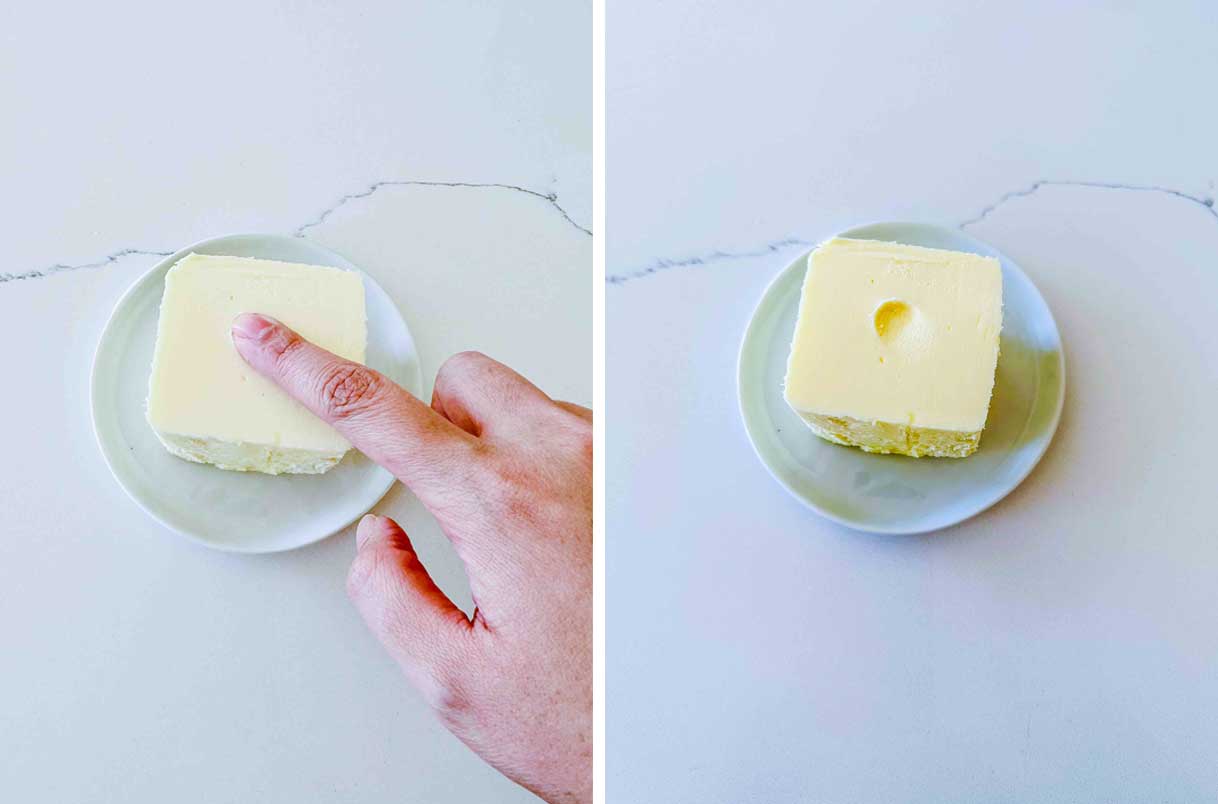
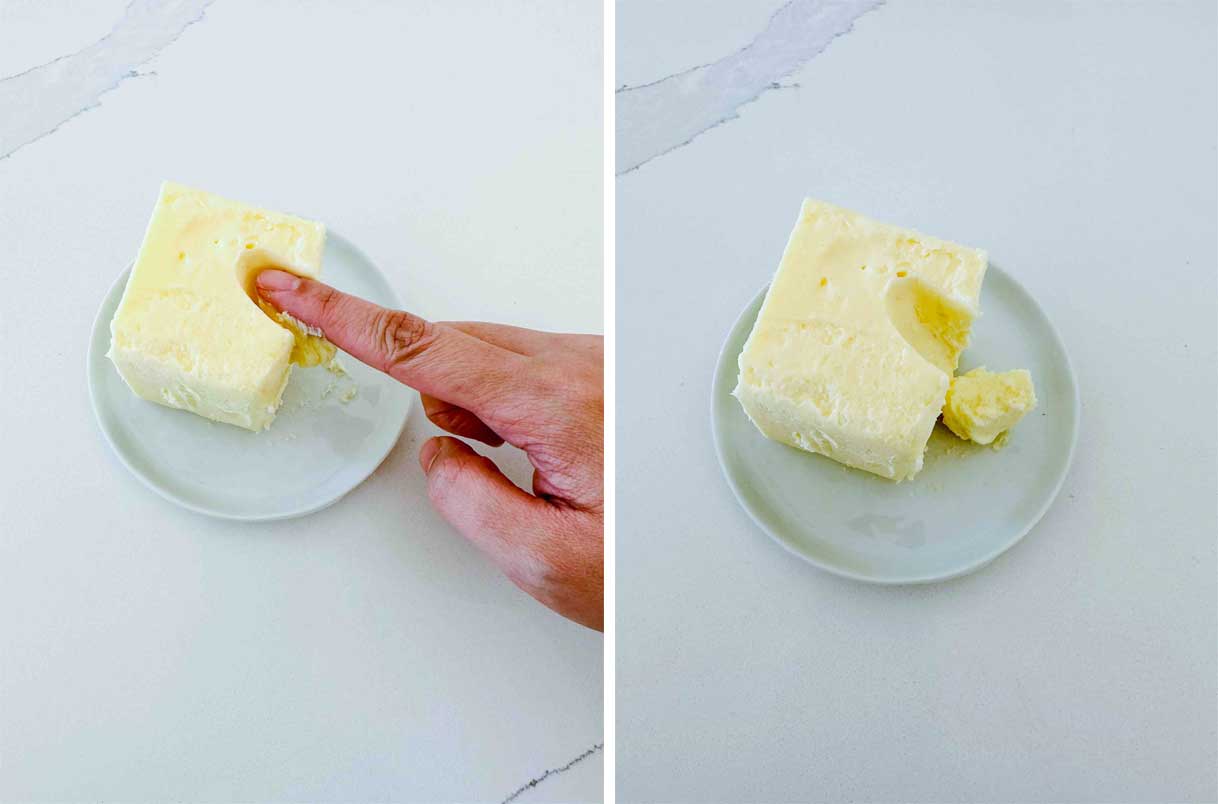
Why the right butter temperature is important in baking
1. Room temperature butter is the key to creating light, fluffy baked goods.
Many recipes require you to cream the butter and sugar together, which is called the creaming method. Creaming butter and sugar together adds pockets of air that aerate the batter. This air puffs up cakes and other treats as they bake, giving them a lighter and fluffier texture.
2. Room temperature butter allows the ingredients to come together seamlessly.
If a recipe calls for room temperature butter, make sure all other ingredients are at room temperature as well. Common examples are eggs, milk, cream cheese, and sour cream.
Room temperature ingredients bond together very easily since they are warmer, creating a smooth and evenly textured batter.
When cold ingredients touch creamed butter, the butter will cool down and solidify again. Cold ingredients do not emulsify together and this results to clumpy batter, dense and flat baked goods.
3. The temperature of your butter impacts a recipe’s desired texture or function.
A good example of this: Pie doughs need cold butter, while a vanilla sponge cake needs room-temperature butter.
Cold butter is ideal for baked goods that should be crisp. Like for pie doughs, we need the butter to remain in small solid chunks to make your pie tender and flaky.
On the other hand, a yellow cake needs room temperature butter to create pockets of air when butter and sugar are creamed together. When butters melts you lose its air-trapping ability.
Is softened butter same as room temperature butter?
The answer is yes. In the world of baking, room temperature butter and softened butter are used interchangeably.
How to bring butter to room temperature?
Leave it out
The best way to bring butter to room temperature is to leave it out on your kitchen counter 2-3 hours before you start baking. If you have a warm kitchen, it may take only an hour. But if your kitchen is colder (like during winter time), you may need to add another hour or so.
Cut into small pieces
If you forgot to take out your butter ahead of time, here is a way to bring them to room temperature quickly:
Cut the amount of butter you need into small pieces and spread them on a large plate or small baking tray. Heat about 2 cups of water into a glass or ceramic measuring cup for 2 to 3 minutes until it is very hot. Remove the water from the microwave and quickly place the plate of butter inside. Close the microwave door. DO NOT turn on the microwave. The residual heat will help bring the butter to room temperature.
Roll it out
Place your butter in a Ziploc bag or between 2 pieces of wax or parchment paper and use a rolling pin to flatten the butter about 1/4 inch thick. This softens the butter while still keeping it cool.
Grate
Use a cheese grater to grate up frozen or butter straight from the freezer.
What about the microwave method?
Some people would suggest using a microwave to soften the butter, but I DO NOT recommend this method. Microwaving tends to melt butter very easily, even if it still looks solid, and can compromise the structure of your baked good.
The other reason I do not suggest using the microwave is because the butter does not soften evenly. Microwave temperatures are wildly inconsistent, which means the results are inconsistent as well. Sometimes one end of the butter becomes too soft, while the other ones are still hard.
It is easy to go quickly from a solid stick to a melted mess when you’re trying to soften butter in the microwave. Once the butter has started to melt the emulsion breaks down and cannot be built up again, even after hardening in the refrigerator or freezer.
Now that you know what room temperature butter is and why it’s important, put your new knowledge to good use! The next time you’re in the kitchen baking up a storm, make sure to use room temperature butter in all of your recipes. Your baked goods will thank you. =)
Put your new knowledge to good use. Try some of these recipes!
